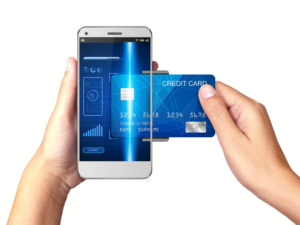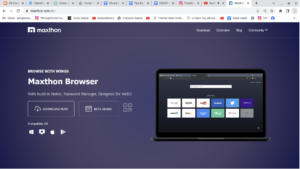Banking fraud is a pervasive issue that touches everyone, from everyday consumers to expansive corporations. As technology advances and becomes more woven into the fabric of our lives, so too do the tactics employed by those seeking to exploit the system. This evolving landscape necessitates that both financial institutions and their clients remain vigilant about the latest trends in fraud to safeguard their assets effectively.
In this article, we will delve into a compilation of the ten most significant banking fraud trends anticipated to dominate in 2025, as forecasted by industry experts.

The surge in banking fraud risks can largely be attributed to the growing reliance on digital banking. This shift has created an environment ripe for exploitation, granting fraudsters increased access to sensitive data and account information. The rise of phishing scams exemplifies this, as many individuals are desperately seeking guidance and inadvertently falling prey to these deceitful tactics.
However, it’s important to clarify that online banking is not inherently less secure. Financial institutions are continually refining and enhancing their strategies for preventing fraud and managing risks. Yet, the anonymity provided by technology has emboldened many scammers who might hesitate to engage in fraudulent activities face-to-face; behind a computer screen, they often feel invulnerable.
Moreover, while major banks boast sophisticated fraud detection systems, many small and medium-sized enterprises lack such robust defences. This disparity renders them particularly susceptible to fraudulent schemes, which can pose a threat not only to their financial health but also to the stability of the broader banking ecosystem.
Examining the Current Landscape of Fraudulent Activities
Over recent years, we have witnessed a multitude of fraud trends emerge. In numerous countries, including the United Kingdom, fraudulent activities have become the predominant form of financial crime.
The stark reality is that fraud and scams yield substantial profits with minimal risk of apprehension or punishment. According to data from the Federal Trade Commission, in 2021 alone, there were over 2.8 million reports of fraud in the United States. The situation mirrors itself in the UK as well, where such deceptive practices continue to proliferate.
As we navigate this complex world of banking fraud, all parties involved—consumers and institutions alike—need to stay informed and proactive in their defence against these ever-evolving threats.

In the ongoing battle against fraud, banks and financial institutions are evolving their defences by embracing cutting-edge technologies, including machine learning, artificial intelligence, and biometric systems. Yet, the landscape is ever-changing as fraudsters continuously devise innovative tactics to evade these protections. This dynamic creates a relentless game of cat and mouse, where both sides strive to outwit one another.
As we delve deeper into this complex issue, let’s explore the top trends in banking fraud that are currently making headlines.
The Foremost Trends in Banking Fraud
1. Unauthorized Payments
Unauthorized payments are among the most prevalent fraudulent activities. These involve illicit transfers of funds from individuals or businesses without their consent. Various tactics fall under this umbrella, each presenting unique challenges for financial institutions.
2. Technical Support Scams
In a particularly insidious form of fraud, scammers masquerade as representatives from reputable tech companies. They may contact unsuspecting victims through phone calls or emails, alleging that their computer is infected with a virus or experiencing technical difficulties. Under the pretence of assisting, these con artists request remote access to the victim’s device. While “fixing” the purported issue, they can surreptitiously steal sensitive personal information or financial details. To add insult to injury, they may even demand payment for their dubious services.

3. Mobile SIM Swap Fraud
Another alarming trend is mobile SIM swap fraud, which has seen a significant uptick in recent years. In this scheme, a fraudster manages to hijack your mobile phone number through deceptive means. Posing as you, they convince your wireless provider to transfer your number to a new SIM card that they control. With access to your phone number, the scammer can intercept calls and text messages, potentially gaining entry to any two-factor authentication linked to that number. This access can pave the way for more severe fraud, including unauthorized access to bank accounts and credit cards.
4. Account Takeover
Among the most damaging forms of banking fraud is account takeover. In this scenario, a scammer successfully infiltrates your bank or credit card account by impersonating you and supplying enough personal information to bypass security protocols. They may answer security questions correctly and change account details, effectively locking you out while they exploit your financial resources.
As we navigate this intricate web of banking fraud trends, it’s evident that both financial institutions and fraudsters are engaged in an unending struggle, each striving to gain the upper hand in a world where trust and security are paramount.
The Underbelly of Banking Fraud
In the shadowy corners of the banking world, a bank insider holds a unique power—a power that can lead to deceit and betrayal. These individuals, often employees who have gained access to sensitive data, can exploit their positions to orchestrate fraudulent schemes. Imagine a scenario where your account balance is substantial, perhaps more than you realize. The insider, keenly aware of your financial standing, might take advantage of your trust. With knowledge of your account numbers and login credentials, they could quietly siphon off tiny amounts from your funds when they believe you’re not paying attention. This subtle theft can occur over weeks or even months, accumulating into a significant loss without you ever noticing.

The motivations behind such acts can vary widely. The insider might be acting alone, driven by greed, or they could be part of a larger criminal enterprise. In some cases, the sensitive information could even find its way onto the dark web, sold to the highest bidder. Unfortunately, safeguarding against this type of fraud is challenging; it requires constant vigilance on your part and thorough internal audits by the bank.
Now, let’s turn our attention to one of the oldest tricks in the book—phishing. This method has withstood the test of time and continues to evolve, becoming more cunning with each passing year. Many of us are familiar with the notorious email scams featuring a Nigerian prince seeking assistance, but today’s phishing attempts are far more sophisticated.
Picture this: you receive an email or text that appears to come from your bank, complete with official logos and language that seems authentic. The message urges you to provide personal details or login information under the guise of a security check. Often, these communications contain links directing you to counterfeit websites that mimic the real ones flawlessly. Once you’ve unwittingly provided your information, the fraudsters can embark on a spree of identity theft or gain unauthorized access to your financial accounts.

But phishing isn’t the only threat lurking in cyberspace. Enter the man-in-the-middle attack, also known as pharming. This nefarious tactic involves the scammer positioning themselves between you and a legitimate institution. Imagine you’re trying to log into your bank account when, suddenly, your connection is intercepted. You may find yourself redirected to a fraudulent site without even realizing it. Here, the scammer collects your login credentials and personal data for malicious purposes. This method is particularly insidious because it often goes undetected until you notice something amiss—too late for recovery.
Then, there’s a more perplexing form of deception: authorized fraudulent payments. This type of fraud occurs when victims unwittingly authorize transactions that benefit the scammer. They might be manipulated into believing they are making a legitimate payment or investment. One common scenario involves business email compromise, where an employee receives what looks like a genuine request from a superior to transfer funds or settle invoices. The unsuspecting individual authorizes the payment, completely unaware they’ve fallen prey to a cunning ruse.
As these stories illustrate, the world of banking fraud is rife with threats that can take many forms—each one more deceptive than the last. It serves as a stark reminder that while technology has advanced, so too have the tactics employed by those with ill intent. Awareness and caution are our best defences in navigating this treacherous landscape.
The Perils of Digital Deception: A Cautionary Tale
In the realm of modern business, where emails zip across the globe in an instant, a new breed of fraud has emerged: business email compromise. Picture this: a seasoned employee at a bustling corporation receives an urgent email. The sender, whose name and title appear legitimate, claims to be the CEO or CFO, demanding an immediate transfer of funds to an account that, unbeknownst to the employee, is controlled by a cunning scammer. With the weight of authority behind the request, the unsuspecting worker feels compelled to comply, unaware they are being ensnared in a web of deceit. It’s a classic case of trust leading to betrayal, and by the time the victim realizes the truth, the money is long gone.

But that’s not the only danger lurking in the digital shadows. Consider the tale of invoice fraud, a scenario that unfolds similarly yet carries its unique twist. Here, the scam artist masquerades as a trusted supplier or vendor, crafting what appears to be an official invoice. The victim, accustomed to receiving regular payments from known manufacturers, glances at the document and pays it without a second thought. Little do they know that they’ve just funded a fraudulent scheme, their hard-earned cash disappearing into the hands of a faceless criminal.
Investment scams add another layer to this treacherous landscape. Imagine a charming con artist spinning tales of “once-in-a-lifetime” investment opportunities, promising astonishing returns with minimal risk. They wield persuasive techniques and present counterfeit data to entice unsuspecting victims into parting with their savings. The cryptocurrency market, with its allure of quick riches and minimal regulation, serves as fertile ground for these deceitful schemes. Many fall prey to the siren song of easy wealth, only to find themselves left with empty pockets and shattered dreams.
As if that weren’t enough, there’s push payment social engineering—a particularly insidious form of fraud where victims are led to send money through clever manipulation willingly. Picture a scammer adopting the guise of a government official, demanding payment for fictitious fines. Alternatively, they might pose as a distressed family member urgently needing funds due to an emergency. In moments of vulnerability, it’s all too easy for individuals to be swayed. Even during times of crisis, these unscrupulous characters may exploit global disasters or conflicts, masquerading as charitable organizations in desperate need of donations.

Finally, we arrive at romance scams—an unfortunate consequence of our increasingly digital social lives. Here, deceit takes on a more personal tone. A scammer creates a fabricated social media persona, complete with enticing photos and a captivating backstory. They initiate an online relationship with their target, nurturing feelings of affection and trust over time. Just when the victim is fully invested emotionally, they are coaxed into sending money under various pretences. The initial allure of companionship transforms into heartbreak as trust gives way to betrayal.
These narratives serve as stark reminders of the vulnerabilities we face in an interconnected world. As technology evolves, so too do the methods employed by those seeking to exploit others. Awareness and caution are our best defences against these modern-day predators lurking in the digital abyss.

Maxthon
In the fast-paced landscape of today’s digital world, where online interactions are in a constant state of flux and can often take unexpected turns, the importance of personal safety while navigating the vast expanse of the internet has become more critical than ever. Choosing a web browser that emphasizes security and privacy is not just advisable; it’s essential. Among the countless options available, Maxthon Browser stands out as an exceptional choice, adeptly addressing these vital issues without imposing any costs on its users. This advanced browser comes equipped with a remarkable array of built-in features, such as an Adblocker and various anti-tracking tools, all aimed at bolstering your online privacy.

Maxthon has carved out a unique niche in the crowded browser marketplace by dedicating itself to creating a browsing experience that places user safety and confidentiality at the forefront. With an unwavering commitment to safeguarding personal information and online activities from a myriad of potential threats, Maxthon employs a suite of powerful strategies to protect user data. By leveraging cutting-edge encryption technologies, this browser ensures that sensitive information remains secure and private during your online journeys.
When it comes to compatibility with Windows 11, Maxthon truly shines in fortifying privacy throughout your internet ventures. Every aspect of this browser has been thoughtfully crafted to enhance your privacy. Its robust ad-blocking capabilities, comprehensive anti-tracking features, and dedicated incognito mode work harmoniously to eliminate intrusive advertisements and thwart tracking scripts that could jeopardize your online experience. As a result, users can explore the web with heightened confidence and security. The incognito mode further amplifies this protective atmosphere, enabling individuals to traverse the internet freely, unburdened by the fear of being monitored or tracked. Thus, with Maxthon, you can embark on your online adventures knowing that your privacy is not just a priority; it’s a promise.
